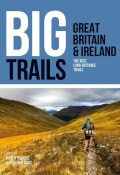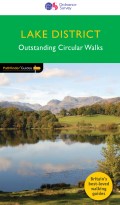Rosemergy, Bosigran Castle, Carn Galver and Porthmeor Cove
A walk along a windswept coast and up a sheltered valley
Google Maps Open Source Maps| Statistics and Files | ||
|---|---|---|
| Start: Car Park near Rosemergy | Distance: 2.5 miles (4.0 km) | Climbing: 160 metres |
| Grid Ref: SW 42077 36374 | Time: 1-2 hours | Rating: Moderate |
| GPX Route File | Google Earth File | Penwith Peninsula |
| Statistics | |
|---|---|
| Start: Car Park near Rosemergy | Distance: 2.5 miles (4.0 km) |
| Climbing: 160 metres | Grid Ref: SW 42077 36374 |
| Time: 1-2 hours | Rating: Moderate |
| GPX Route File | Google Earth File |
Ordnance Survey Explorer Map (1:25,000)
The Walk:
The Atlantic coast of the Penwith Peninsula between St Ives and Cape Cornwall is wild and rugged, and there are no good harbours. The economy here has traditionally consisted of just a few subsidences farms, though mining for metals played a part for a time
This circular walk shows evidence of both activities. It begins beside the B3306 road, near the hamlet of Rosemergy, beneath the great chimney of the pump house of Carn Galver Mine.
 Rosemergy
Rosemergy Bosigran Castle
Bosigran Castle
Carn Galver Mine, once famed for its production of tin and silver, gets its name from the 754-foot rocky hill of Carn Galver (from the Cornish for look-out place), on the other side of the road.
The pump house and engine house were built in 1871 to raise ore and pump dry the main shaft, 780 feet (241 metres) deep. No sooner were they completed that the price of tin plummeted, and the mine closed in December of the same year.
From the mine you walk towards a high granite headland. The silver-grey granite building away to your right is the Count House, once the home of the mine manager, and now owned by the Climber's Club of Great Britain.
On the headland is Bosigran Castle, an Iron Age site linguistically linked with Arthurian legend - Bos is Cornish for dwelling place, and Y'gran was Arthur's mother.
There is nothing to see now but a broad, tumbled wall. The basin-like hollows in the summit rocks, which fill with water after rain, appear man-made but are more likely to be the result of natural erosion.
The headline makes a fine viewpoint, and the cliffs provide a popular challenge for rock climbers. Around the turn of the century, the cliffs were regularly doused with whitewash for the benefit of the keepers of Pendeen lighthouse, 2.5 miles (4 kilometres) to the west; when they could not see the white mark by the light of their lamp, they knew it was time to sound the foghorn.
 Carn Galver Mine
Carn Galver Mine Porthmeor Cove
Porthmeor Cove
The coastal walk through gorse and heather passage cliffs where kittiwakes and fulmars nest. As you go, you cross many small walls, the remains of an ancient radial field system, which is the classic pattern of West Penwith farming and is based on the Iron Age patterns.
The route descends past Porthmeor Cove into a valley sheltered from the prevailing wind. This gives a considerable contrast to the rugged coastline. Meadow buttercup and star sedge thrive here, and goldfinches, linnets and yellowhammers are all readily seen.
Along the way, another chimney and more abandoned buildings mark the workings of Porthmeor Mine, another victim of the crash of 1871. You climb out of the valley to Bosigran Farm. Today's farm is smaller than it would have been in medieval times. Most of the granite buildings date from the 18th and 19th centuries.
The farm holdings run down from the high moors, across the coastal plateau and out onto the cliffs. This time honoured arrangement meets all the farms needs throughout the year; rough grazing and peat for fuel from the moors, arable land and meadows on the plateau, brush fuel and more rough grazing on the cliffs, and seaweed fertiliser from the beaches.
The walk ends with a pleasant stroll through the small fields of the plateau towards the chimneys of Carn Galver Mine, though a short excursion to explore the hamlet of Rosemergy is a tempting alternative.
Acknowledgments: Text derived from the Out and Out Series; Discovering the Countryside on Foot. Pictures courtesy of Wikipedia.
Feedback and Suggestions: To suggest a link for inclusion on a this page please complete the Walking Englishman Feedback Form. Thank you.







